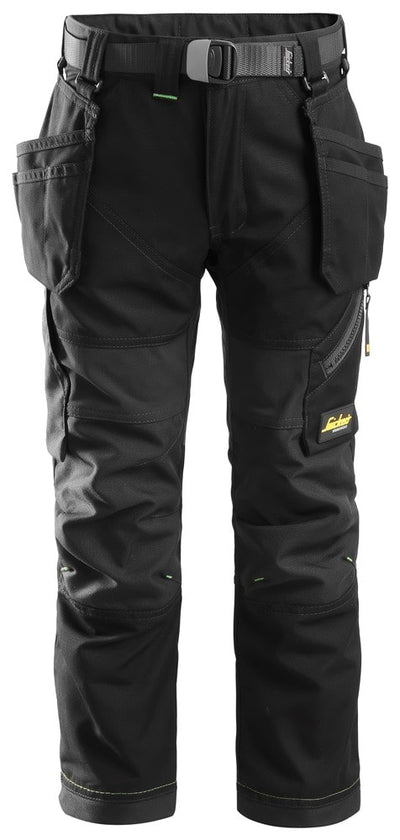How to Find Work Trousers That Fit Perfectly
Finding the perfect pair of work trousers is crucial for comfort, confidence, and professionalism. Ill-fitting trousers can hinder productivity, while a well-fitted pair boosts confidence and ensures ease of movement. This guide covers everything you need to know about choosing work trousers that fit perfectly.
Why Fit Matters in Work Trousers
Comfort vs. Professionalism
Work trousers should be both comfortable and appropriate for a professional setting. A tight or loose fit can lead to discomfort throughout the day, affecting work performance.
Impact of Poor Fit on Confidence
Wearing trousers that don’t fit properly can make you feel self-conscious. A tailored fit enhances appearance, boosting confidence and professional presence.
Understanding Work Trouser Fits
Regular Fit
A classic fit that provides room in the seat and thighs without being too loose.
Slim Fit
A more tapered fit that contours to the body, offering a sleek, modern look.
Relaxed Fit
Ideal for those who need extra room for movement, particularly in physically demanding jobs.
Tailored Fit
A structured fit that enhances formality and professionalism.
How to Measure for the Perfect Fit
Waist Measurement
Measure around your natural waist, ensuring the tape measure is snug but not too tight.
Hip Measurement
Wrap the tape around the fullest part of your hips to determine the right fit.
Inseam Length
Measure from the crotch to the bottom hem of your trousers to find the correct leg length.
Rise Measurement
The rise refers to the distance from the crotch to the waistband, influencing comfort and style.
Choosing the Right Fabric
Breathability
Choose breathable materials like cotton or wool blends for comfort throughout the day.
Stretchability
Opt for fabric with elastane or spandex for flexibility and ease of movement.
Durability
Polyester blends and wool tend to last longer, making them ideal for workwear.
Common Fit Issues and How to Fix Them
Waist Gap
Use a belt or have trousers tailored to avoid a loose waistband.
Tight Thighs
Choose relaxed or regular-fit trousers if slim fits feel restrictive.
Long Inseam
Have trousers hemmed for a clean, professional look.
Bunching at the Bottom
Opt for a tapered or cropped style to prevent excess fabric at the ankles.
The Role of Tailoring for Work Trousers
When to Alter Trousers
Tailoring is ideal when minor adjustments can improve fit, such as taking in the waist or shortening the hem.
Cost of Tailoring
Simple alterations are affordable, but investing in tailored trousers ensures a perfect fit for years.
How to Shop Smart for Work Trousers
Try Before Buying
Whenever possible, try on trousers to assess fit and comfort.
Read Size Charts Carefully
Sizes vary between brands, so refer to the specific size guide before purchasing.
Caring for Your Work Trousers
Washing Instructions
Follow fabric-specific washing guidelines to maintain quality.
Ironing and Steaming
Proper ironing prevents wrinkles and keeps trousers looking sharp.
Maintaining Shape
Store trousers on hangers to avoid creases and retain structure.
Budget vs. Quality: Striking the Right Balance
Cost-Effective Options
Balance affordability with quality by looking for durable, well-constructed options.
Longevity Factors
Investing in high-quality fabrics and proper care extends the lifespan of work trousers.
Seasonal Considerations for Work Trousers
Lightweight Fabrics for Summer
Opt for cotton or linen blends to stay cool in warm weather.
Heavy Fabrics for Winter
Choose wool or thermal-lined trousers for warmth during colder months.
Sustainability in Work Trousers
Ethical Production
Look for brands committed to fair labour practices and ethical sourcing.
Eco-Friendly Fabrics
Sustainable materials such as organic cotton and recycled fabrics reduce environmental impact.
FAQs
1. How should work trousers fit around the waist?
They should sit snugly without needing a belt to hold them up.
2. What’s the best material for work trousers?
Cotton, wool blends, and polyester mixes offer durability and comfort.
3. Can work trousers be altered?
Yes, minor adjustments like hemming and waist alterations can improve fit.
4. How do I prevent work trousers from shrinking?
Follow the care label’s washing instructions and avoid high heat drying.
5. Are slim-fit trousers appropriate for all workplaces?
It depends on the dress code—some offices prefer tailored or regular fits over slim styles.
6. How often should work trousers be replaced?
With proper care, quality trousers can last several years before needing replacement.
Conclusion
Finding work trousers that fit perfectly involves understanding different fits, measuring accurately, choosing quality fabrics, and considering workplace dress codes. Whether opting for off-the-rack or tailored trousers, proper care ensures longevity and maintains a professional appearance. Follow these expert tips to invest in work trousers that provide comfort and confidence throughout the workday.
Shop our top picks for Snickers Work Trousers
6214 Snickers Ruffwork Canvas Work Trousers with Holster Pockets Black
6214 Snickers Ruffwork Canvas Work Trousers with Holster Pockets Steel Grey
View our full range of work trousers here.





